I have to say, Shudder puts out some really amazing documentary-type series like 101 Scariest Horror Movie Moments of All Time, Eli Roth’s History of Horror, and the new Horror’s Greatest. All of these have one man in common – showrunner Kurt Sayenga.
Filled with interviews, opinions, anecdotes, tiny tidbits of information, thoughts, and deep dives from some of the horror’s finest, Horror’s Greatest had some big shoes to fill, and it did it with ease.
Embark on a thrilling journey through the genre’s best with insights from the masterminds behind your favorite scares.
To celebrate the series premiering on Shudder, I chatted with Kurt about how the project came about, selecting the topics, horror movies, and more!
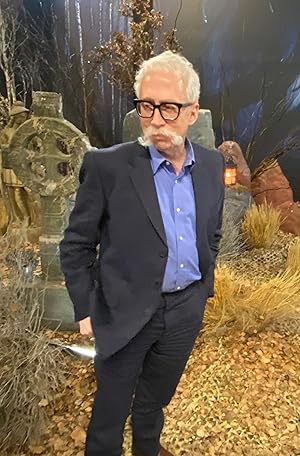
PopHorror: I did watch a few episodes of Horror’s Greatest. Fantastic work. I’m super excited to talk to you about it today.
Kurt Sayenga: Thanks. Thanks for having me.
PopHorror: Yeah, of course. So how did this project come to fruition?
Kurt Sayenga: It’s come to fruition, let’s see. Well, we did 101 Scariest Horror Movie Moments of All Time with Shudder, and that did well for them. We were anxious to work together again because it was such a pleasant experience working with Nick and Sam in particular – who I was directly in contact with from Shudder – Nick Lazo and Sam Zimmerman. And I had a lot of different ideas about things I wanted to do, kind of topics to cover. So, out of that came this series, which kind of has everything in it. It’s flexible enough to allow a broad number of different topics and approaches, so you can have things like the “Tropes and Clichés” episode and “Japanese Horror.” We have an upcoming one on film scores and a lot of different things.
PopHorror: I really enjoyed 101 Scariest. That was one of the best ones I think that Shudder has put out. So I’m glad you mentioned that one. And I don’t really know how series like this work when you have so many guests that come in, and talk about their favorite tropes and clichés, and all of that stuff. So how do you approach them a certain way or do you have to recruit them, or do you put out a call for them? How do you get the participants to come in and talk about their favorites?
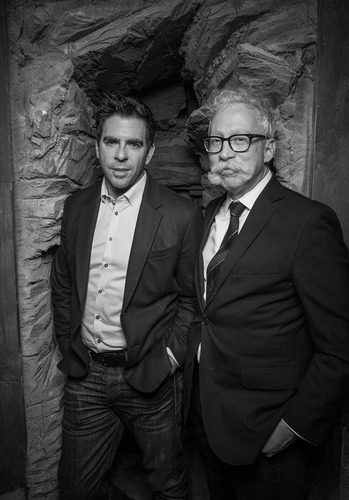
Kurt Sayenga: A lot of people I know, because after making Eli Roth’s History of Horror, then 101, I know a lot of people.
PopHorror: I bet!
Kurt Sayenga: And generally speaking, they seem to have had good experiences, so they’ll come back if they can. And then there’s also a casting agent who goes out to people too. Sometimes the agents contact us; they have clients who seem to be interested in it. This was actually kind of a challenging year because literally the week that we did the first round of interviews, everybody went on strike. So we lost a whole bunch of people basically for that. And we were able to do another week after the strike, where we kind of got in more of the people who are prohibited from participating in the first place. But that actually, in some ways, was an interesting thing because it kind of allowed us to also branch out with people who are different than just directors and actors, which is usually the people I tend to know but also could bring in a broader selection of people and even more diverse viewpoints on horror, which is always been what I’m after with these things. Just to show that it’s not just this monoculture; that horror embraces many different things and all types of people.
PopHorror: I love that because I love seeing there are critics on there. I read a lot so I like to see authors involved. So I do like to see more than just those making horror movies, but the ones that watch them and write about them. I really appreciate the diversity there. Was it difficult for you to narrow down the topics for each episode? And how did you narrow them down for the final selection?
Kurt Sayenga: I think I came up with about 50 topics and then sent them into the network and then they had their favorites. Then we sort of whittled it down from there to a reasonable number – 10 – which was ambitious already, actually. So it’s a lot. But yeah, mostly through that process.
PopHorror: That’s a lot of whittling down. That’s losing a lot of ideas that you had. Were there any that you wished you could have included, but ultimately, we’re not able to?
Kurt Sayenga: Well, the idea with this series is that it’s a continuing thing, God willing. With luck, I will be able to cover them all.
PopHorror: Were there any films that someone else mentioned that you maybe weren’t aware of that compelled you to find them and watch them?
Kurt Sayenga: The final number of films that we wound up drawing for and including in the entire run of the series was somewhere over 700. I thought 101 was a lot last time, but literally the pool was 700 films by the end of it. And some of those films definitely were pulled in by a couple of the editors. One in particular was editor Caleb Emerson, who edited the “Tropes and Clichés” episode, had a pretty encyclopedic knowledge of extremely deep cuts, more on the kind of gory and excessive zone of horror. So there are a few titles in there that I had not heard of. The one piece of feedback I’ve gotten from almost everybody who’s seen the series so far has been there are so many films that they hadn’t heard of, even though they’re deep horror mavens and gorehounds, and cinephiles, there’s a lot in there. So yes, there are a number that I hadn’t heard of, and I’ve seen a lot of movies.
PopHorror: I don’t doubt that!
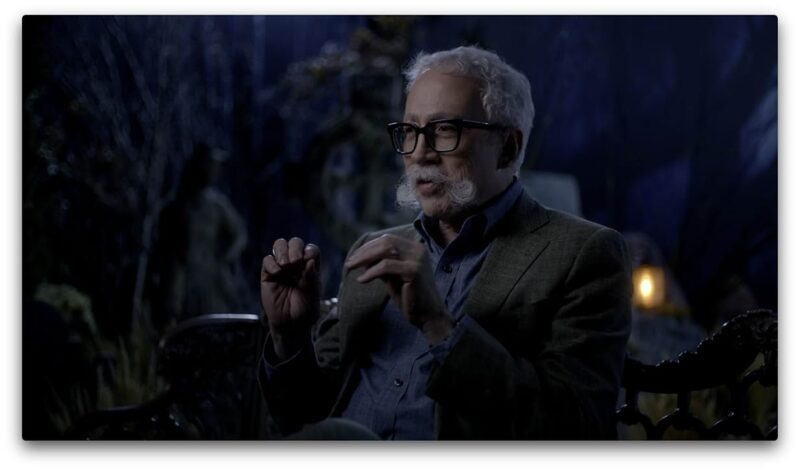
Kurt Sayenga: But there’s more. There’s always, always more. One of the interviewees, Howard S. Berger, who’s in the show, does commentary tracks and he’s done hundreds of commentary tracks. I got a look at his film library and there’s still so many titles I’ve never heard of. In particular, things that came out of the ’70s and ’60s when they were really cranking out films, and a lot of things are being revived and discovered that I think were lost for a long period of time. That’s mostly because they were shot on film, so you can still dig them out. And like all the things from the ’80s and ’90s, anything shot on video or whatever stored on video, those things are all being lost.
PopHorror: The horror genre has evolved over the years and has become a box office powerhouse. Why do you feel so many people connect with horror?
Kurt Sayenga: Well, the usual explanation is these are frightening times and so it’s easier for people to latch onto that. But I think that’s an oversimplification. A lot of it may have to do with the film industry in general. Horror is truly one of the last places where filmmakers have some amount of freedom, that they can tell stories that are a bit more honest and don’t have to have happy endings. You don’t have to have God-like super beings coming down and beating the shit out of each other in order to make some sort of statement about good and evil in the universe. You can get a little bit more nuanced in horror, I think. And also, horror delivers these kinds of primal thrills. Horror is opera. I mean, that’s why the Italians really vibe with it so well, because it is and can be very big and expressive, and it gets to a lot of core emotions, while at the same time there’s more of a subtlety and it ties into a lot of basic human experience, but writ large. So I think that has a lot to do with the continuing appeal of it. And also, yeah, it really is the only thing that isn’t just derivative that’s out there right now. Everything seems like a retread or a Xerox of a Xerox, or a copy of a copy.
PopHorror: What I like about horror is that when I watch a horror movie, it’s the one thing that I can’t wait to tell people about it and to talk about it, and say, “Oh my God, this happened, and you wouldn’t believe what they did in this movie.” I don’t find myself doing that with other genres. I can watch a comedy, but I may say, “Oh, hey, I heard this joke,” but I don’t have long and great discussions with my friends about the last comedy that I watched. But we can sit there and dissect horror and talk about a horror movie for hours. I think it also brings people together more so than watching something else, any other genre. And you mentioned the world out there right now, the horrors of real life. I think that horror movies give you a platform as well to kind of not exploit the horror of real life, but to bring that discussion in and it makes people more open to talking about it than if you saw it in some other type of film.
Kurt Sayenga: Well, it’s definitely much like science fiction used to be. I don’t really know the state of science fiction these days, but yeah, it’s a big metaphor, delivery device, allegory metaphors. Some of them are pretty overt and some are not. But one likes to think that the message sinks in at some level. Usually, the message is something about tolerance and empathy. And most of the horror fans I know actually tend to be pretty decent people, and they’re kind of aware of the dangers of the world. There is that cliché that some people think that horror fans are latent serial killers or something, but I think it’s kind of the opposite. That’s why I don’t trust people who aren’t into horrors.
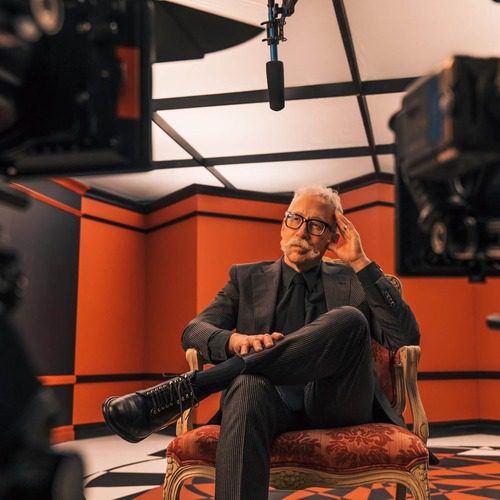
PopHorror: You’re the second person in the last week that has said something very similar. And it is very true. Some of the most empathetic and sensitive people I know are diehard horror fans. They are all about seeing people eviscerated on screen. The more blood the better. But then in real life, they are so sensitive and they’re crying at commercials. So there is a very big misconception that horror fans just want to go out there and copy what they just watched on screen. And that’s so untrue.
Kurt Sayenga: Absolutely. It’s more cathartic and cleansing.
PopHorror: Yes. And I have just one last question for you today. What is your favorite scary movie?
Kurt Sayenga: It always changes, but honestly, these days, I think it’s John Carpenter’s The Thing. The Thing always delivers. It’s always there. It gives you a little something. It has his kind of dry humor to it as well, while being a fantastic creature effects showcase. You got Kurt Russell being Kurt Russell, it’s pretty awesome. Keith David, the whole milieu. I know the one thing you can criticize about a film is like there aren’t any women in it. And you can also say, “Well, it’s Antarctica in 1982, so that’s actually probably demographically fairly accurate.” And in some ways that sort of takes… Without the sex or romance, because you know if they put a woman there, it would’ve wound up as some ’80s Kurt Russell has to have a thing with the girl, the whole deal. You know what I mean? So this way it’s more like a war movie. You know, like a ’50s or ’60s war movie, something like that, where it’s just a bunch of guys and they all tear each other apart. Which is kind of an accurate reflection of what can happen when a bunch of men get together and are under threat. So yeah, I love The Thing. The Thing delivers.
PopHorror: It does. It never even occurred to me that there are no women in it. I had never-
Kurt Sayenga: That’s the thing, you don’t really notice, because it’s not an issue. Gender is not an issue; it is nothing. It goes way past that. It just gets into primal issues of survival.
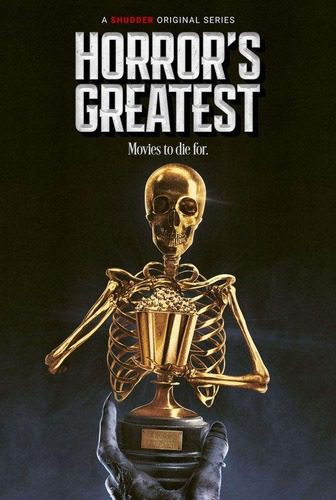
Thank you so much to Kurt for taking the time to speak with us. Horror’s Greatest is now on Shudder!
 PopHorror Let's Get Scared
PopHorror Let's Get Scared




